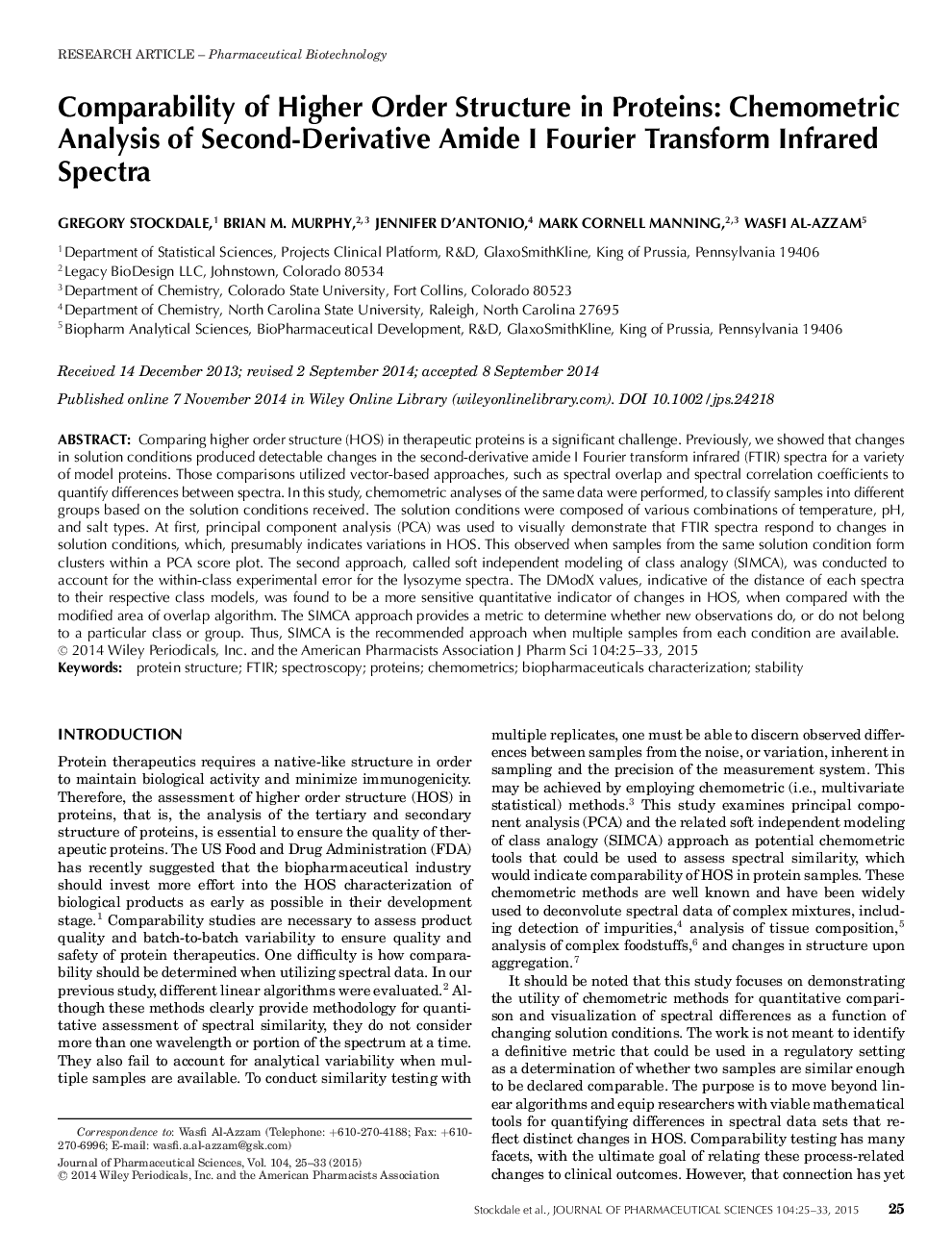| Article ID | Journal | Published Year | Pages | File Type |
|---|---|---|---|---|
| 2484618 | Journal of Pharmaceutical Sciences | 2015 | 9 Pages |
Abstract
Comparing higher order structure (HOS) in therapeutic proteins is a significant challenge. Previously, we showed that changes in solution conditions produced detectable changes in the second-derivative amide I Fourier transform infrared (FTIR) spectra for a variety of model proteins. Those comparisons utilized vector-based approaches, such as spectral overlap and spectral correlation coefficients to quantify differences between spectra. In this study, chemometric analyses of the same data were performed, to classify samples into different groups based on the solution conditions received. The solution conditions were composed of various combinations of temperature, pH, and salt types. At first, principal component analysis (PCA) was used to visually demonstrate that FTIR spectra respond to changes in solution conditions, which, presumably indicates variations in HOS. This observed when samples from the same solution condition form clusters within a PCA score plot. The second approach, called soft independent modeling of class analogy (SIMCA), was conducted to account for the within-class experimental error for the lysozyme spectra. The DModX values, indicative of the distance of each spectra to their respective class models, was found to be a more sensitive quantitative indicator of changes in HOS, when compared with the modified area of overlap algorithm. The SIMCA approach provides a metric to determine whether new observations do, or do not belong to a particular class or group. Thus, SIMCA is the recommended approach when multiple samples from each condition are available. © 2014 Wiley Periodicals, Inc. and the American Pharmacists Association J Pharm Sci 104:25-33, 2015
Keywords
Related Topics
Health Sciences
Pharmacology, Toxicology and Pharmaceutical Science
Drug Discovery
Authors
Gregory Stockdale, Brian M. Murphy, Jennifer D'Antonio, Mark Cornell Manning, Wasfi Al-Azzam,
